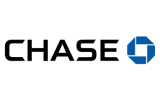Earn up to 5% AER on your cash!
Some of the best rates of interest you will get on cash currently are on current accounts. E.g Nationwide offer 5% AER fixed (4.89% gross pa) in credit interest on balances up to £2,500 for the first 12 months
You can also benefit from switching your account. A number of banks now offer switch incentives. HSBC are currently offering £150 if you switch your current account to them. The good news is that switching is a lot easier than it used to be – basically the new bank account provider will do all the work in setting up your direct debits and standing orders etc.
For students looking for a good account Santander UK are offering a free railcard for 4 years as long as you are 18 and are in or are about to enter into full time further education.
High Interest Current Account Offers
Current Account Offers With Switching Incentives
There are no tables for this criteria
Current Account Guide
When considering opening a current account, it is important to compare the different types available from a range of banks and building societies. If you already have a current account it is possible to switch banks or building societies if you are not satisfied with the service or have found a better deal somewhere else. It is worth considering the following things when choosing a current account:
- The rewards that are being offered (high interest/incentive fee)
- The overdraft limit and any interest or additional fees
- You may wish to consider opening a savings account with the same bank or building society to gain more control over your finances
- Current accounts are for your daily use and once your account is opened you will be issued with a bank card which you can use at most ATMs in the UK. It is also a good idea to consider the different types of current accounts that are available from banking organisations, for instance:
-
- Instant access current account
- High interest current account
- Package current account
- Student current account
-
Free current account (as opposed to a current account where you pay a premium for a current account with extra benefits)
Switching your Current Account to another Bank or Building Society?
It is now easier than ever to switch your current account to another bank or building society because banks are beginning to employ teams of ‘switchers’ who operate a slick switching system to ensure that no mistakes are made during the changeover process.
In September 2013 all banks and building societies in the UK should offer to complete the switchover throughout a seven day period. In this period, the in-house switchover team organise and input your finances into the new system, including any direct debit arrangements and any standing orders.
Compare Current Accounts
You should always compare current accounts to find the account that most suits you. It is important to open an account with a bank or building society that you feel comfortable with in terms of their customer service and the additional features linked with your potential account.
Use our comparison tables to find the bank with the best current account for you. There is a wide variety of banks in the UK and an even larger choice of current accounts to choose from. It is important to make the right decision, but if you do rush into the wrong decision, you can always switch to another bank or building society.
What if there are any problems?
And the switching service is covered by a guarantee: the new bank must refund you if there are any charges because payments didn’t go through on time. But you have to ask them for this.
Can I keep my old current account open when I switch?
What about transferring “recurring payments”?
Because they’re linked to a card rather than directly to your bank account, they’re not included in the switching service (or covered by the guarantee).
It’s not always clear which are your continuous payment authorities: you won’t find them listed on your online banking portal. When you set them up you were asked for you card details (“please read me the long card number”) rather than your bank account and sort code numbers.
You’ll need to check your monthly card statements: any regular payments going out each month that are not marked as DD (direct debit) or SO (standing order) are likely to be continuous payment authorities.
If you want to keep paying for this service (or loan) in this way, you’ll need to contact each provider and tell them your new card details as soon as you have them.
This may sound like a lot of bother, but it is useful to check periodically what’s going out of your account regularly: there may be services you’re not using (such as fast delivery, or additional online data storage) that you want to cancel.
What about the individuals who have my bank account details, for sending occasional payments?
It’s probably not a good idea to just email all your Contacts with your new account details. If you’re concerned about email security, the most secure way of sending bank account details to specific people is via WhatsApp.
And if any payments are accidentally made to your old account, for 36 months (three years) after you’ve switched, your new bank or building society will arrange for any payments to be automatically redirected to your new account. They will also contact the sender and give them your new account details.
When should I choose to make the transfer?
If all your regular payments tend to go out of your account around the same time it’s best to choose a time of the month when your bank account isn’t so busy.





